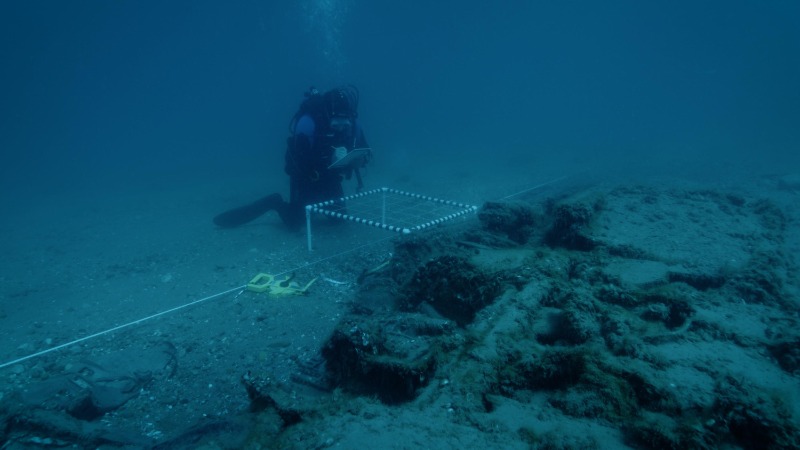
70 years after Lt. Frank Moody’s crash of the P-39 Airacobra, divers found the wreckage in Lake Huron. After the discovery, Michigan’s State Maritime Archaeologist Wayne Lusardi began investigating and preserving. Through careful archaeological work, Lusardi has pieced together the story of Lt. Moody and the Tuskegee Airmen, the pioneering African American pilots of World War II. In National Geographic’s upcoming series, The Real Red Tails, Lusardi’s efforts come together in a heartfelt tribute to these brave men, revealing insights from the underwater site.
Innovation & Tech Today spoke with Archaeologist Wayne Lusardi about his initial interest in leading historical expeditions such as this, the biggest challenges he faced when recovering the P-39, and more.
Innovation & Tech Today: What sparked your interest in leading expeditions to uncover and study WWII-era artifacts like the P-39?
Wayne Lusardi: As Michigan’s State Maritime Archaeologist, I am interested in all historic, cultural, and archaeological resources submerged in the Great Lakes, ranging from inundated 8,000-year-old paleo hunting sites to 20th-century rockets. My primary research interest over the last two decades has been the investigation and documentation of shipwrecks, many of which are several hundred years old.

10 years ago, David and Drew Losinski discovered the remains of a World War II aircraft. I immediately changed focus to the aviation heritage of the Great Lakes and how airplane wrecks are preserved in the archaeological record. The association of this particular aircraft wreck with the Tuskegee Airmen allows an opportunity to study the Airmen, chronicle their training experiences in the Midwest, and help tell a story that is little known to Michiganders and people across the country.
I&T Today: What were some of the biggest challenges you faced during the expedition to recover the P-39, and how did you overcome them?
Lusardi: The greatest challenge of working underwater is unquestionably weather. Strong winds create large waves that ultimately create poor- and sometimes dangerous- diving conditions. Even after the lake has settled down after a storm, the currents can remain strong- and visibility is reduced- making even simple tasks like recording video more challenging. Cold water and depth constrictions also limit the diver’s time on the lake bottom. The greatest strength in working against the weather is patience. Wait for a good weather day rather than get beat up trying to overcome the forces of nature.

I&T Today: How do you ensure the preservation and documentation of historical artifacts like the P-39?
Lusardi: The submerged historical, cultural, and archaeological resources, including shipwrecks and airplanes located in the Great Lakes around Michigan, are, for the most part, owned and managed by the state. Federal and state laws protect these sites from looting and unauthorized salvage. That said, education is perhaps the best means of preservation.
When people understand the importance of these non-renewable resources, they feel a sense of stewardship and are eager to assist in conservation efforts. Most of the underwater archaeologists who have assisted with the Tuskegee Project, for example, are volunteers contributing their own time and expense because they understand the importance of this unique site.
I&T Today: What lessons can we learn from studying WWII-era artifacts like the P-39- in terms of technological advancements and the human stories behind them?

Lusardi: The Bell P-39Q Airacobra was an innovative aircraft when developed in the late 1930s but became nearly obsolete by the end of World War II. Many were lost in combat overseas or in training accidents here in the United States. Most Airacobras that survived the war were eventually scarped, and very few survive today. Even fewer aircraft directly associated with the Tuskegee Airmen survive, making the discovery and archaeological documentation of Lt. Moody’s airplane a unique opportunity to study an airplane built for combat, lost in training, and then submerged in a lake for 80 years.
In addition to discovering the cause of the accident, we have learned much about the aircraft’s color scheme, the settings the pilot was operating under when he lost his life, and the subtle differences between Airacobras used at Selfridge Field in Michigan, Airacobras used in combat, and Airacobras that have been restored and are either still flying or preserved as museum exhibits. The aircraft discovery also provided opportunities to meet and learn from several original Tuskegee Airmen and World War II veterans who trained in P-39, as well as Lt. Moody’s family members.
Catch the premiere of The Real Red Tails on National Geographic on June 3rd!











